Shocking New Torture Methods Revealed in Russian Horror Chamber
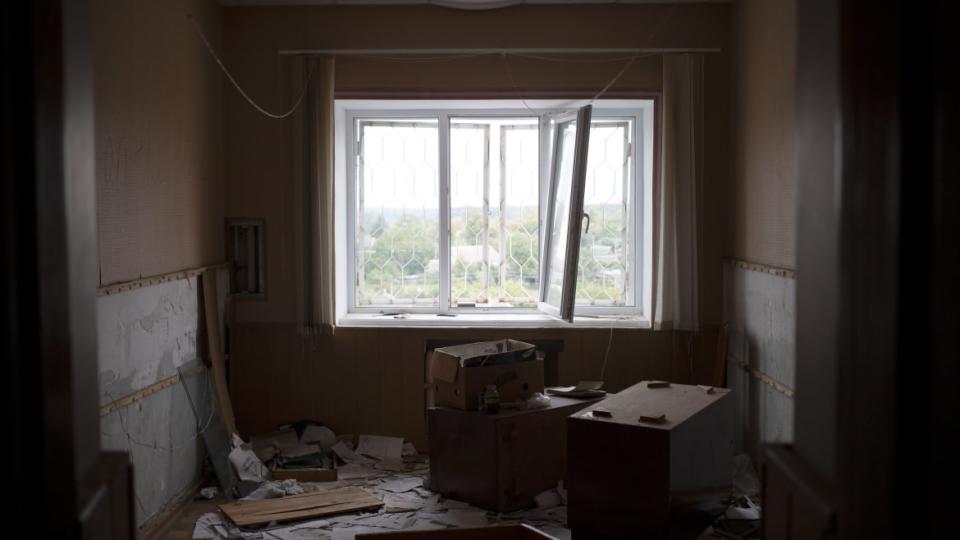
BALAKLIYA, Eastern Ukraine—“Our father who art in heaven,” begins the words of the Lord’s Prayer scratched into the side of a wall in a police station turned torture chamber in the recently liberated city of Balakliya. The floors of the cells are still stained with blood, and the stench of human waste and rotting food is overwhelming. At the top are a series of scratches marking the days passed, and next to them, a simple cross.
For six months, this police station, as with many others in the region, was the center of a brutal Russian occupation regime based on violence and fear. Ukrainian officials claim to have found at least 10 of these interrogation centers spread throughout the liberated territory.
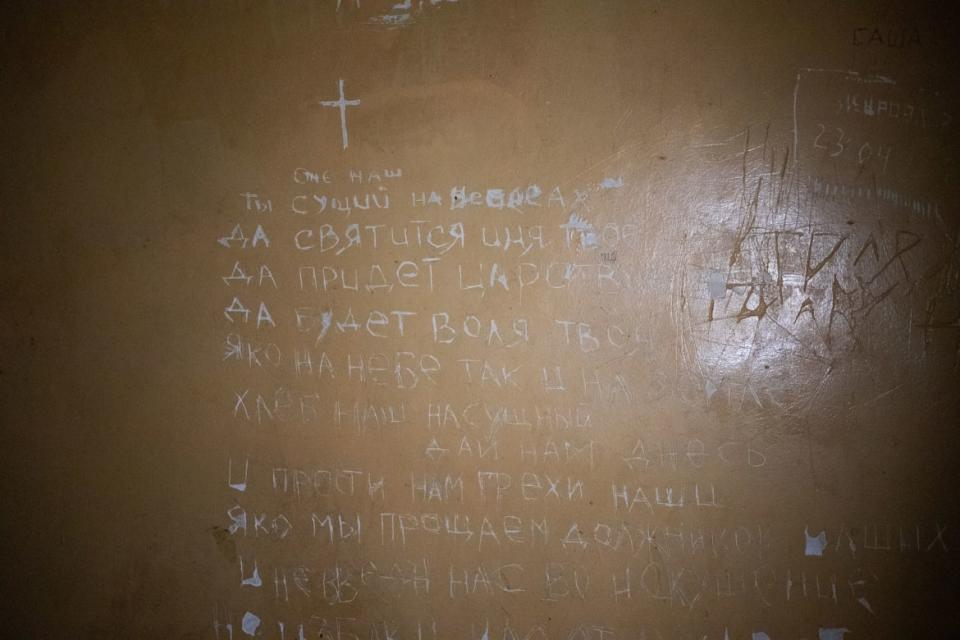
The Lord’s Prayer carved into holding cells in the police station turned torture chamber in Balakliya.
One former detainee, Artyum—who didn’t want to be named for fear the Russians might return—told The Daily Beast that he was brought in for questioning because he had a Ukrainian flag on his wall at home. “They asked me why I would have a Ukrainian flag. I told them ‘Because this is Ukraine! Should I have had the Japanese flag instead?’”
The Ukrainians allege that for several weeks they kept dozens of men and women cooped up in tiny filthy cells, demanding answers on who was in the military, and who was likely to be giving the Ukrainian military information on Russian positions in the area. “We didn’t want to leave our houses, because any time you left the street, they would check your phone. If they found you’d written anything rude about Russian people, or the Russian army, that was the only excuse they needed to arrest you,” said Artyum. He could regularly hear detainees being tortured with electricity, although says that it was never used on him.
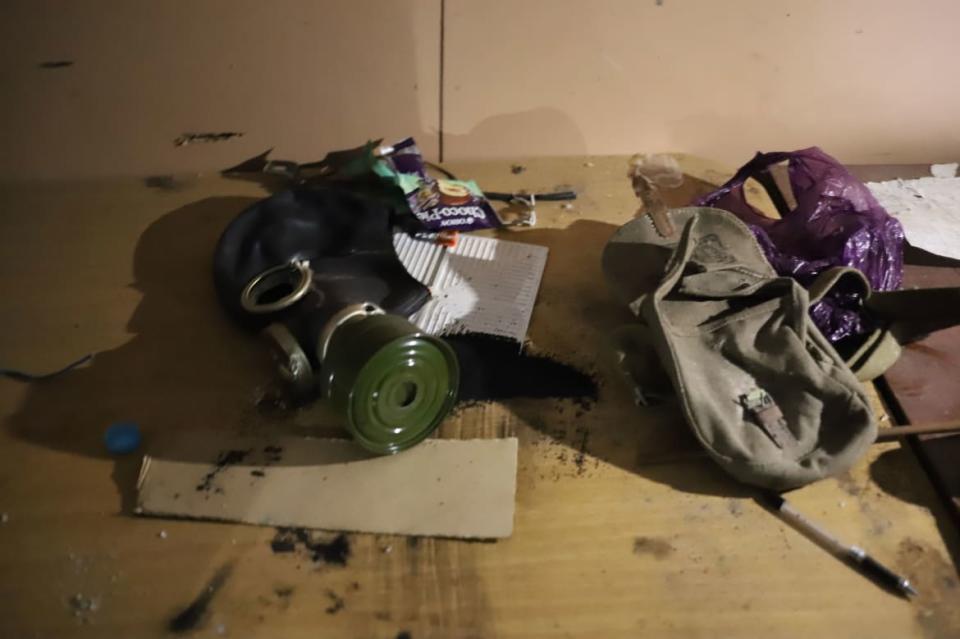
Gas masks used for torture in Izyum police station.
The worst punishments were allegedly reserved for prisoners of war from the Ukrainian army. “They detained and tortured every service person they could find,” said Oleksandr, a Ukrainian police investigator as he showed The Daily Beast around another chamber of horrors in a police station in the neighboring city of Izyum. “I don’t know a single Ukrainian serviceperson who was arrested but not tortured.”
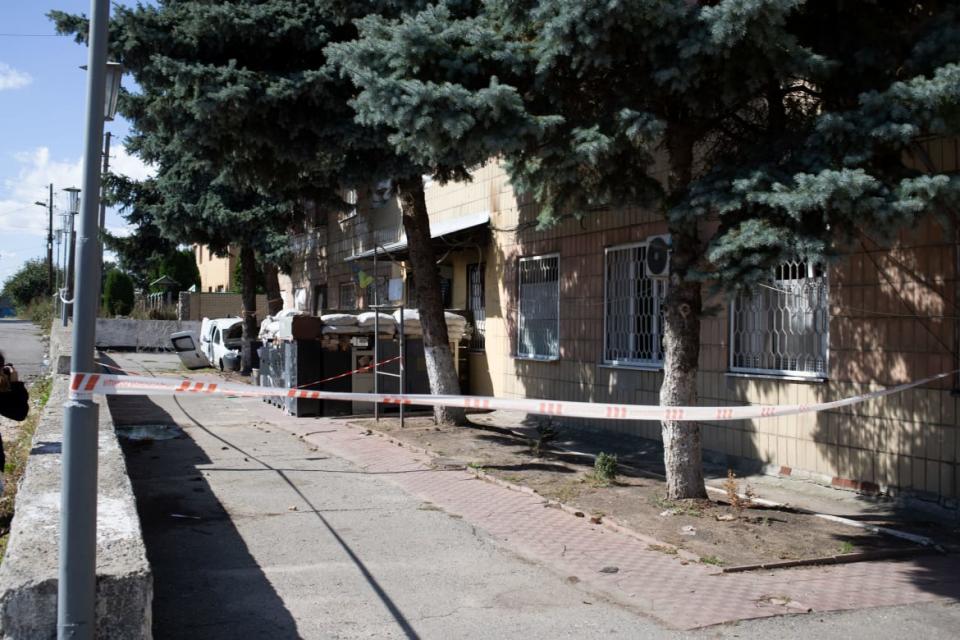
The entrance to the Izyum police station used as a torture chamber.
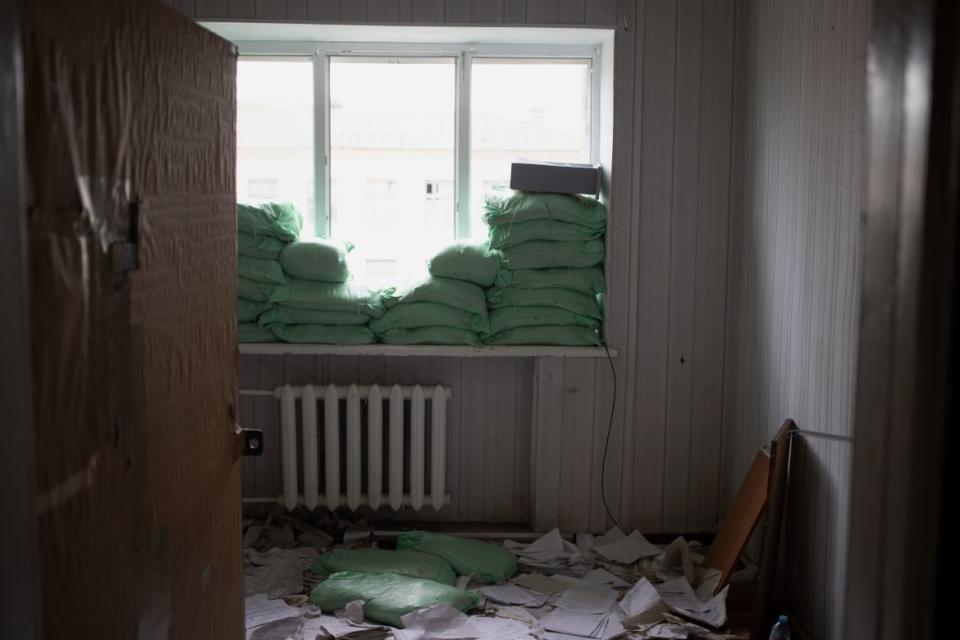
The destroyed rooms ransacked by Russian soldiers in the Balakliya police station.
In the station, there were electrical wires used to shock detainees. There were gas masks, modified so that the wearer would suffocate. On the ground were bloodied ropes that had been used to strangle detainees, as well as wooden sticks and police truncheons used to beat them. Police had so far identified 20 people who were held prisoner there, but noted that it was the first day of their work, and they expected to rapidly find more. The police stations themselves are ransacked, with the floors covered in papers, disused filing cabinets and shards of glass from the destroyed windows. The occasional sandbag or piece of barbed wire is stacked up against the walls.
These small cities in the Kharkiv region of eastern Ukraine were captured by Russia after heavy fighting in March, following their initial failure to capture the city of Kharkiv itself in the early days of the war. The city of Izyum in particular was a key source of Russian logistics for their push on the northern part of the Donbas region, Putin’s key objective after he failed to take Kyiv. Now, his army in the east also looks to be falling apart. In the last two weeks, Ukrainian forces have liberated around 8,500 square kilometers of their territory, and have routed Russian forces in the region.
The roads in the region are littered with military vehicles including tanks and armored personnel carriers, all marked with the infamous Z sign. But unlike the vehicles seen in the Kyiv region, which are all burned-out husks, many of these vehicles seem to have been abandoned in perfect working order.
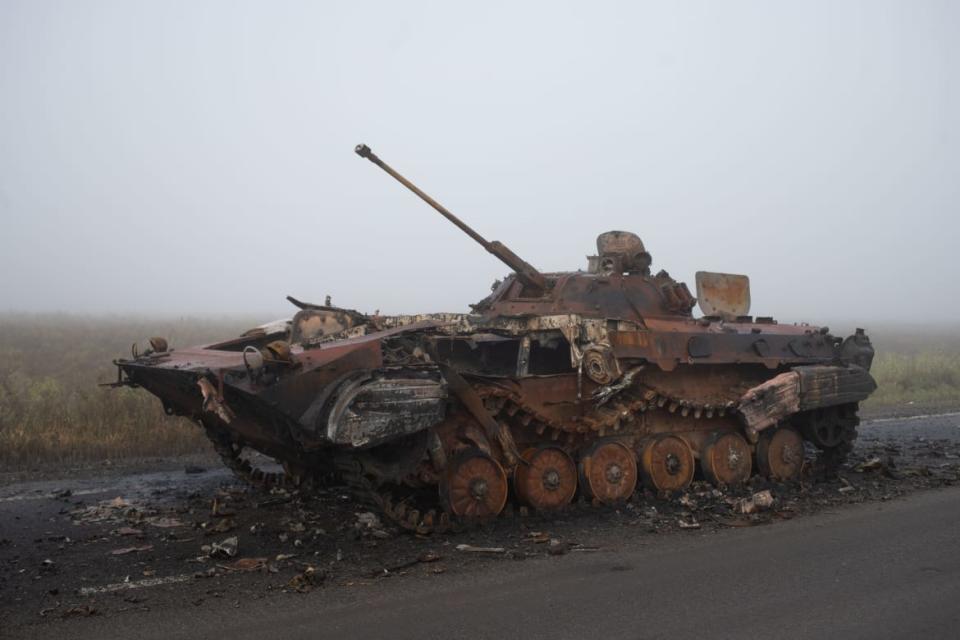
A destroyed Russian armoured vehicle on the road to Izyum.
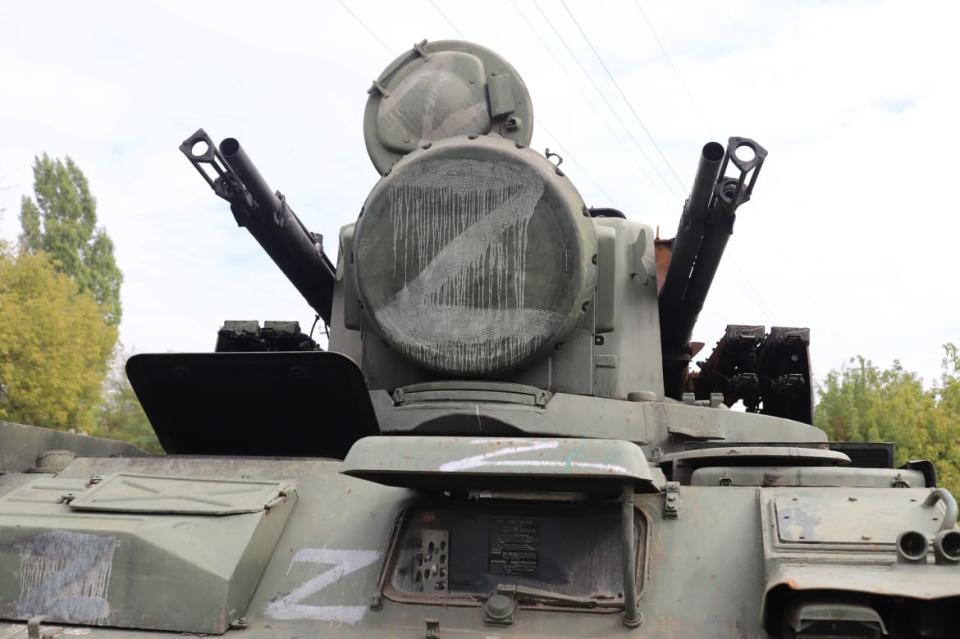
The remains of a Russian anti-aircraft gun on the road to Izyum.
One joke going around Ukrainian social media was that Russia was quickly overtaking the United States to become the biggest donor of military aid to Ukraine. It is these continuing defeats that have forced Putin to begin what he calls a “partial mobilization” of troops in the Russian reserve, spurring the biggest anti-war protests in Russia since the invasion began in February.
In most of the region, life is beginning to get back to normal, although heavy fighting has continued in Kupyansk, the easternmost city on the Oskil river, which is the new frontline in the region. Ukrainian forces now appear poised to retake major parts of the Luhansk region, which Russia spent enormous amounts of blood and treasure to capture over the summer.
Outside, in the main square in Izyum, residents are starting to emerge from their six-month nightmare. A small group of children were playing hopscotch next to a rose garden, while their parents reclined on benches beside them. The idyllic scene was broken by the sight of the buildings lining the square, all of which had been wrecked by shelling.
Ukrainian authorities believe that over 80 percent of the buildings in Izyum were damaged during the fighting. Hundreds of residents have been found buried in a mass grave just outside the city limits, most of whom are believed to have died from artillery or airstrikes during Russia’s assault on the city in March.
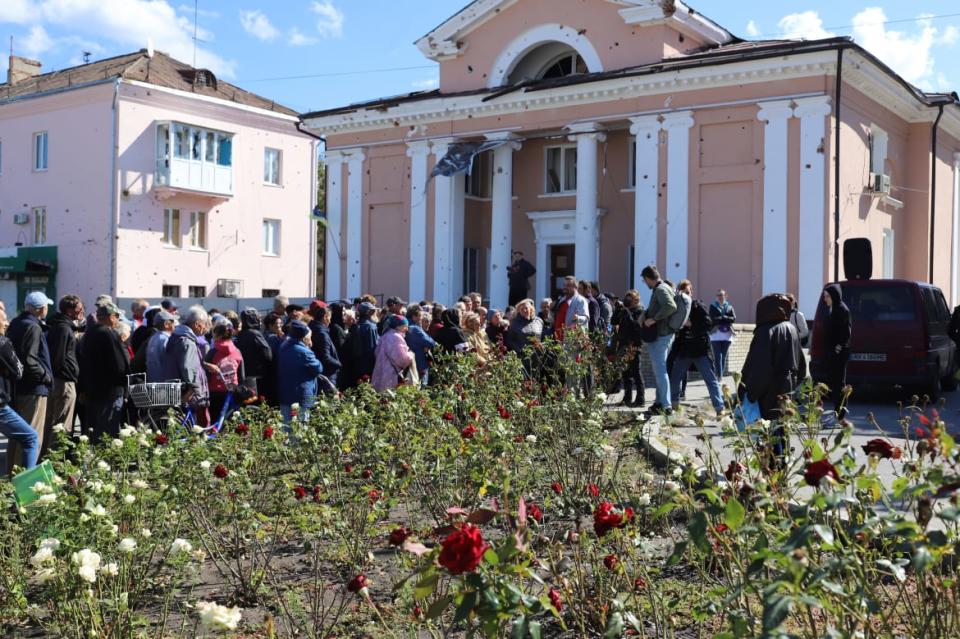
Civilians line up to receive humanitarian aid supplies in Izyum.
A local Christian charity had arrived to deliver aid to the fifty or so people lining up in the square when The Daily Beast arrived this week.
The provisions were simple fare: a bottle of Pepsi, a few cans of luncheon meat and packets of dry pasta each. With most shops and supermarkets damaged or destroyed, and no power throughout the city, many residents are reliant on this to survive.
But before they distributed the provisions, a priest was called on to lead the group in prayer. “Our father who art in heaven,” he began, as he led the crowd in a recitation of the Lord’s Prayer in a chilling echo of the words scratched into the cell wall. He goes on to deliver a short sermon to the long line of haggard-looking Ukrainian civilians. “I thank you, God, that you had mercy on these people. Many have died, please help their relatives to take some solace.”
Get the Daily Beast's biggest scoops and scandals delivered right to your inbox. Sign up now.
Stay informed and gain unlimited access to the Daily Beast's unmatched reporting. Subscribe now.

